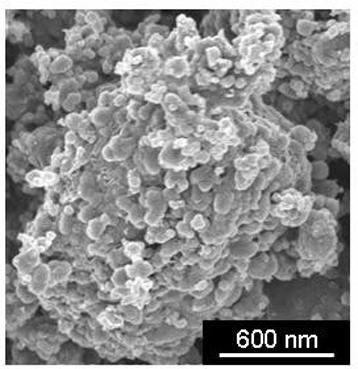Why is lithium iron phosphate, a candidate for use in future lithium batteries, able to conduct electricity despite being composed of insulating materials? Chemists at CNRS in collaboration with a research team from CEA-Liten, managed to shed light on this paradox

The "graded domino model", which was confirmed experimentally by them, showed that local pressures within the material allow the transfer of ionic and electrical conductivity from one area to another, so that the overall activity of a battery is possible. The results of this research open completely new horizons in the search for improved materials for use as battery electrodes and help explain how the battery of future electric vehicles works.
Ion-lithium batteries, which contain three to four times more energy per unit mass relative to common batteries, are now widely used in portable electrical devices (computers, cell phones, MP3 players, etc.). The materials that make up the positive electrode of these batteries are highly effective but too expensive to be used in large batteries required for electric and hybrid vehicles.
In the future, it is possible that these applications will be based on the material phosphorus-iron-lithium - it is not dangerous to the environment, has special properties, is inexpensive and has good thermal stability (an important feature in terms of safety). All these features make it the best candidate for use in the lithium batteries of future electric vehicles. However, this material apparently does not have the ionic and electrical conductivity properties required to make the electrode work.
The chemists from the CNRS institute and their colleagues became the first to explain this paradox. Through the study of the phosphorus-iron-lithium material, they showed that the electric current moving in the battery originates from the process of "graded dominoes". This phenomenon occurs at the moment when local and internal pressures are exerted on the interface between the released material and the material in the free state. Then, the electrical and ionic conductivity spreads very quickly from that point of the interface and passes from one point to another similar to the behavior of dominoes. The model was confirmed using microscopic measurements.
This novel reaction process, which is similar to a wave washing over the entire crystal, explains how the combination of two insulating materials (one in a charged state and the other in an uncharged state) can, nevertheless, power lithium-ion batteries. These findings are an important step forward in the search for new, cheaper and safer materials for making electrodes in lithium batteries. The research also makes it possible to understand what is the process that takes place at the nanometer level of batteries based on this material.

One response
The main thing is that they stop selling us ice
http://www.globes.co.il/news/docView.aspx?did=1000364744&fid=3220